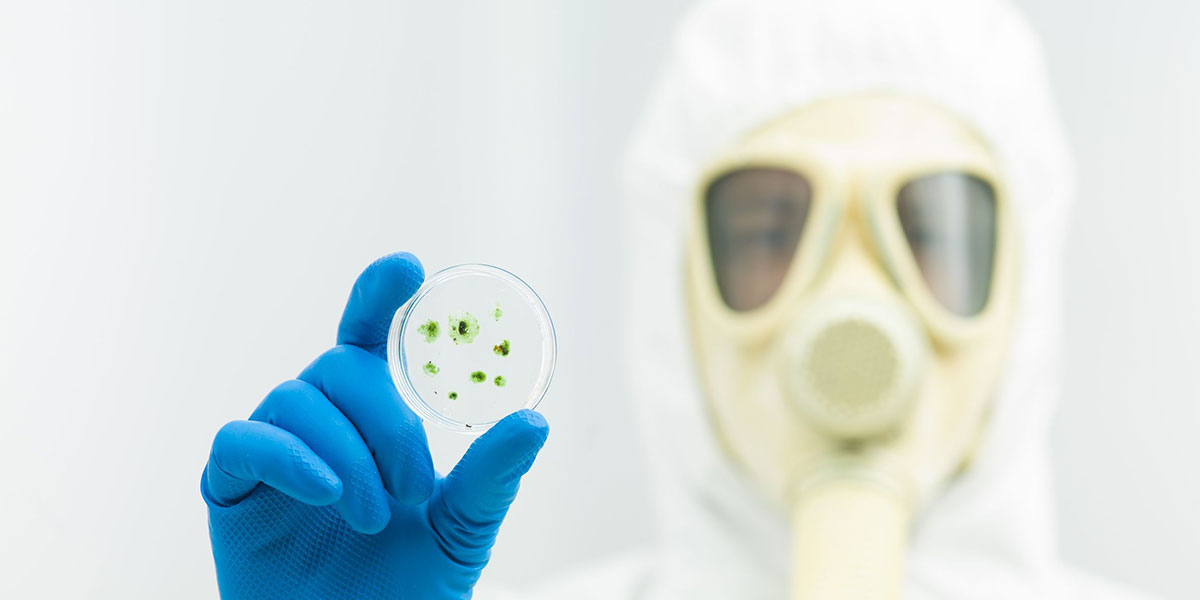
Have you recently come across the terms “black mold,” “toxic mold,” or even “toxic black mold” in your day to day life and have found yourself left with a plethora of questions? What is black mold? Is all black mold toxic? What does black mold look like? Where does it grow? Should I take action?
Mold is all around us all the time. Sometimes it is harmless and at times even helpful. When it comes to the home though, mold can have disastrous effects. As such, mold and the above stated variants are often hot topics on the news, amongst homeowners, and across the internet. So how did you hear about it?
Perhaps one of these terms was mentioned to you by a coworker who recently saw a news special on the dangers of “toxic black mold.” Perhaps you came across a black substance in your bathroom or kitchen and have begun searching for information on “black mold” or “toxic mold” on the internet. Or maybe yet, you were scrolling through Facebook and came across this article.
No matter how these terms were introduced to you or how you got here, we’re glad they were and that you did as there is much misinformation spread about mold, and specifically black mold, every day. In this article, we aim to separate fact from fiction and answer all your questions along the way, leaving you with a plan of action and (hopefully) a little piece of mind.
What is Black Mold?
Starting with the basics:
- lack mold, commonly referred to as toxic mold or toxic black mold, is largely misconstrued and overhyped
- Not all black mold is black
- Not all mold that is black is black mold
Let’s dig a little deeper.
For starters, the term “toxic mold” in and of itself is not accurate. According to the CDC*, “while certain molds are toxigenic, meaning they can produce toxins (specifically mycotoxins), the molds themselves are not toxic, or poisonous.”
When people talk or write about “black mold,” “toxic mold, or “toxic black mold” they are likely referring to Stachybotrys chartarum (Stachybotrys atra), one of the thousands of strains of mold. Some believe this type to be more dangerous than the rest, but is it really?
Is all Black Mold Toxic?
No. While some strains of Stachybotrys** chartarum (Stachybotrys atra) produce mycotoxins, not all do; depending on the environment, some may even lose the ability to produce these toxins over time.
Other types of molds have the ability to produce these mycotoxins as well, including more common types found in the home such as Cladosporium, Penicillium, Aspergillus, and Alternaria.
So if all types of mold can produce mycotoxins, what’s really the difference between all of them? In short, there isn’t much of one, but let’s keep digging.
What Does Black Mold Look Like?
As previously mentioned, not all black mold is black. While black mold is sometimes simply black as the name suggests, it is often a dark greenish-black in coloration and slimy in nature.
On the contrary, just because a mold is black does not mean it is black mold. While it could be, it could also be one of the other thousands of strains of mold. The coloration of mold varies widely, ranging from shades of orange, green, black, brown, purple, and even pink.
As such, you most often cannot tell the difference between black mold and other types simply by looking at it. Sometimes it is not even visible. So we ask ourselves again, what’s the difference? Perhaps there’s a difference in where they grow?
Where Does Black Mold Grow? Does it Grow in Different Places Compared to Other Types?
Not really.
Like most types of mold, Stachybotrys chartarum (Stachybotrys atra) can be found inside or outside and can be transported from one to the other via air, water, or even pets. When it comes to the home, Stachybotrys chartarum (Stachybotrys atra) most often grows in humid environments on moist, organic substances such as drywall, carpeting, insulation, or even sub-flooring; it is also known to grow on things like dust, wallpaper, upholstery and fabric.
Stachybotrys chartarum (Stachybotrys atra) is less prevalent in the home compared to the more common types mentioned above such as Cladosporium, Penicillium, Aspergillus, and Alternaria.
While it is less common than other types, it is not rare. No matter the type of mold, they should all be treated the same when it comes to removal.
How is Mold Removed from the Home?
Some sources recommend removing mold through DIY methods such as using bleach or another commercially available cleaner. We however, do not. When these methods are applied, you more often than not end up making the problem worse.
To avoid this, we recommend bringing in a professional for proper mold testing and remediation. While you may think you can remove the problem on your own, it is best to bring in the experts for the safety of all involved.
So What’s Really the Deal with Black Mold? Is all of it Toxic?
While black mold can be dangerous and at times toxic, it is certainly not the “most dangerous” type. All molds, no matter their strain, possess the ability to yield disastrous results.
Because of this, you should treat all molds the same. If you suspect you have mold, do yourself and your family a favor by calling in the experts and getting proper mold testing and, if necessary, remediation done. You’ll thank yourself (and us) in the long run!
References:
*CDC – https://www.cdc.gov/mold/stachy.htm
**Stachybotrys – https://en.wikipedia.org/wiki/Stachybotrys_chartarum


Leave A Comment